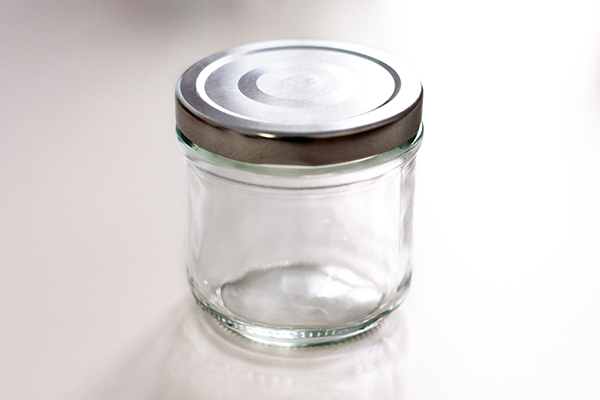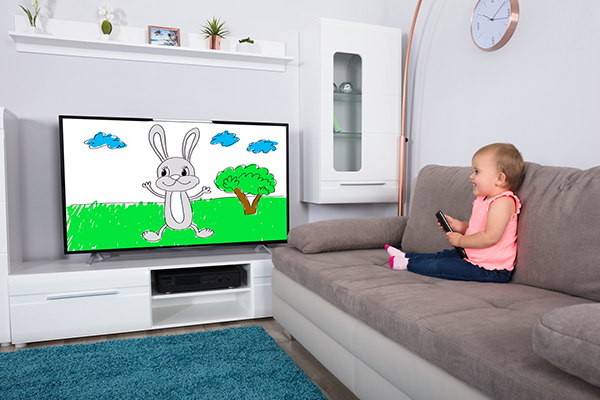
GOAL
I can make the A-R sound and the final schwa-L sound.
A-Rの音とfinal schwa-Lの音を発音できるようになる。

TRY IT!
The apple tarts and little dark chocolate candy bars are on sale too!

SOUNDS
Sound Profile
 Voicing音の有無
Voicing音の有無yes有声音
 Mouthくち
Mouthくちopen開ける
 Lips唇
Lips唇slightly rounded ➡ pushed forwardやや丸くすぼめる➡前に突き出す
 Teeth 歯
Teeth 歯 Tongue舌
Tongue舌the tip of the tongue touching the back of the bottom front teeth ➡ raised + the sides of the tongue touching the top side teeth舌の先端を下の前歯の後ろに当てる➡持ち上げる+舌の両側を上の歯の内側に当てる
 Jaw顎
Jaw顎down ➡ neutral引く➡元の位置
Steps
Open your mouth and round your lips slightly.くちを開けて唇をやや丸くすぼめましょう。
Drop your jaw down.顎を下げましょう。
Press the tip of your tongue against the back of your bottom front teeth.舌の先端を下の前歯の後ろに当てましょう。
Make a voiced sound.音を出しましょう。
Raise your jaw up to neutral and push your lips forward.顎を元の位置に戻して唇を前に突き出しましょう。
Raise your tongue up and push it forward. The sides of your tongue should touch your top side teeth.舌を持ち上げて前に押しましょう。舌の両側が上の歯の内側に当たります。
Make a voiced sound.音を出しましょう。
The tip of your tongue should not be touching anything.舌の先端がどこにも触れていない状態にしましょう。

Katakana Otoshiana
Because there is no perfect match for the A-R sound in Japanese, many English words with that sound are written with aa (アー) in katakana.
market ➡ maaketto (マーケット)
start ➡ sutaato (スタート)
guitar ➡ gitaa (ギター)
Be careful to make them the A-R sound in English!
日本語にはA-Rの音がありません。そのためA-Rの音が含まれる英単語はよくカタカナの「アー」で表記されます。
market ➡ maaketto (マーケット)
start ➡ sutaato (スタート)
guitar ➡ gitaa (ギター)
英語で発音する時はA-Rの音で発音するように気を付けましょう!
 Voicing音の有無
Voicing音の有無yes有声音
 Mouthくち
Mouthくちslightly openやや開ける
 Lips唇
Lips唇 Teeth歯
Teeth歯 Tongue舌
Tongue舌the middle of the tongue slightly rounded up ➡ the tip of the tongue touching behind the top front teeth ➡ pulled back舌の中央をやや丸めながら上げる➡舌の先端を前歯の後ろに当てる➡引く
 Jaw顎
Jaw顎Steps
Slightly open your mouth and stretch your lips horizontally.ややくちを開けて唇を横に開きましょう。
Arch the middle of your tongue slightly up.舌の中央を軽くアーチ状にしましょう。
Make a voiced sound.音を出しましょう。
Slightly open your mouth.ややくちを開けましょう。
Press the tip of your tongue behind your top front teeth.舌の先端を前歯の後ろに当てましょう。
Make a voiced sound. At the same time, pull your tongue back.音を出しましょう。同時に舌を後ろに引きましょう。

Katakana Otoshiana
When English words ending with the final schwa-L sound are written in katakana, a vowel sound is added after them.
pineapple ➡ painappuru (パイナップル)
idol ➡ aidoru (アイドル)
trouble ➡ toraburu (トラブル)
Be careful not to add the vowel sound in English!
final schwa-Lの音で終わる英単語がカタカナで表記される場合、単語の終わりに母音が追加されてしまいます。
pineapple ➡ painappuru (パイナップル)
idol ➡ aidoru (アイドル)
trouble ➡ toraburu (トラブル)
英語でfinal schwa-Lの音を発音する時は母音を追加しないように気を付けましょう!
Steps
Open your mouth and round your lips slightly.くちを開けて唇をやや丸くすぼめましょう。
Drop your jaw down.顎を下げましょう。
Press the tip of your tongue against the back of your bottom front teeth.舌の先端を下の前歯の後ろに当てましょう。
Make a voiced sound.音を出しましょう。
Raise your jaw up to neutral and push your lips forward.顎を元の位置に戻して唇を前に突き出しましょう。
Raise your tongue up and push it forward. The sides of your tongue should touch your top side teeth.舌を持ち上げて前に押しましょう。舌の両側が上の歯の内側に当たります。
Make a voiced sound.音を出しましょう。
The tip of your tongue should not be touching anything.舌の先端がどこにも触れていない状態にしましょう。
Steps
Slightly open your mouth and stretch your lips horizontally.ややくちを開けて唇を横に開きましょう。
Arch the middle of your tongue slightly up.舌の中央を軽くアーチ状にしましょう。
Make a voiced sound.音を出しましょう。
Slightly open your mouth.ややくちを開けましょう。
Press the tip of your tongue behind your top front teeth.舌の先端を前歯の後ろに当てましょう。
Make a voiced sound. At the same time, pull your tongue back.音を出しましょう。同時に舌を後ろに引きましょう。

Katakana Otoshiana
Because there is no perfect match for the A-R sound in Japanese, many English words with that sound are written with aa (アー) in katakana.
market ➡ maaketto (マーケット)
start ➡ sutaato (スタート)
guitar ➡ gitaa (ギター)
Be careful to make them the A-R sound in English!
日本語にはA-Rの音がありません。そのためA-Rの音が含まれる英単語はよくカタカナの「アー」で表記されます。
market ➡ maaketto (マーケット)
start ➡ sutaato (スタート)
guitar ➡ gitaa (ギター)
英語で発音する時はA-Rの音で発音するように気を付けましょう!

Katakana Otoshiana
When English words ending with the final schwa-L sound are written in katakana, a vowel sound is added after them.
pineapple ➡ painappuru (パイナップル)
idol ➡ aidoru (アイドル)
trouble ➡ toraburu (トラブル)
Be careful not to add the vowel sound in English!
final schwa-Lの音で終わる英単語がカタカナで表記される場合、単語の終わりに母音が追加されてしまいます。
pineapple ➡ painappuru (パイナップル)
idol ➡ aidoru (アイドル)
trouble ➡ toraburu (トラブル)
英語でfinal schwa-Lの音を発音する時は母音を追加しないように気を付けましょう!

SENTENCES
/ɑːr/
- They sell jars of honey at the supermarket.
- We drove our car to the park.
- Lisa drew the stars during art class.
- In this cartoon, the talking shark wears a scarf.
- My guitar is larger than Mark’s guitar.
/əl/
- I want a bagel with pineapple jam.
- Rachel canceled her travel plans with her friend.
- Some people are scared of beetles.
- The model became a famous idol.
- Luis watched a show about turtles on the Animal Channel.
/ɑːr/ + /əl/
- Every March, I travel to Rachel’s farm.
- Our car passed through a dark, little tunnel.
- I filled the purple jar with little chocolates and candy bars.
- I check the labels on cereal boxes and candy bars at the supermarket.
- I’m going to buy some pineapples and large red apples at the farmer’s market.

DIALOGUES
/ɑːr/
| Tutor: | Oh, no! What happened to your arms? There are large marks! |
| Student: | I bought a lot at the farmer’s market. I carried everything home, so now my arms hurt. |
| Tutor: | The market is far from your house. Why did you carry everything? You have a car, right? |
| Student: | Yeah! But my sister used my car to go to the amusement park! |
/əl/
| Student: | I’m going to travel with Rachel to Thailand this summer. |
| Tutor: | Oh, cool! Are you going to Turtle Beach? A lot of people go there to see the sea turtles! |
| Student: | Yeah! After that, Rachel and I want to see the underwater caves and tunnels! |
| Tutor: | Nice! By the way, you should try the apple and pineapple tea there! They’re really good! |
| Student: | Okay! We’re going to try some noodles too! I’m so excited to travel! |
/ɑːr/ + /əl/
| Tutor: | Hey! Jars of pineapple jam are on sale at the supermarket today! |
| Student: | I know! The apple tarts and little dark chocolate candy bars are on sale too! |
| Tutor: | The sale starts at 10 o’clock today! Let’s go! We can use my car. |
| Student: | Okay! I hope the large bagels and ramen noodles are also on sale! |

TRY IT AGAIN!
The apple tarts and little dark chocolate candy bars are on sale too!

FEEDBACK
I can make the A-R sound and the final schwa-L sound.
A-Rの音とfinal schwa-Lの音を発音できるようになる。SCORING RUBRIC
|
4 |
3 |
2 |
1 |
|---|---|---|---|
|
You were able to produce today’s sounds very smoothly and naturally. Very well done! 本日の音を問題なく自然に発音できました。素晴らしいです。 |
You were able to produce today’s sounds with minimal difficulty. できました。上出来です。 |
You were able to produce today’s sounds but struggled a lot. We recommend taking 手こずりました。もう一度レッスンを 受けましょう。 |
You were unable to produce today’s sounds. Please take the もう一度レッスンを受けてください。 |
PERSONALIZED FEEDBACK
phonology
発音が相手にとって聞き取りやすいか phoneme
Is your pronunciation easy for the other person to hear?














